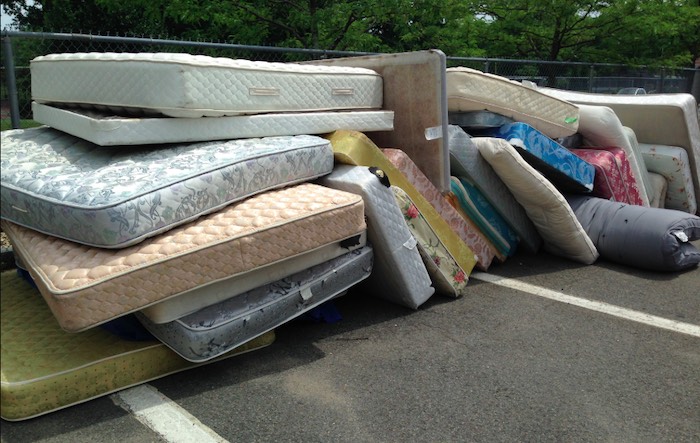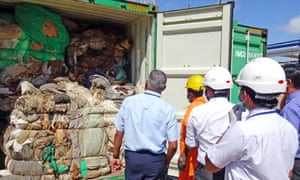
After you buy a new mattress, have you ever wondered what happens to your old one once it’s hauled away for disposal? If you’ve ever asked yourself, “what really happens to my old mattress once the council picks it up”, then you’re in the right place.

Can My Old Mattress Be Recycled?
While some junk removal companies (and some mattress removal companies) have a genuine commitment to being eco-friendly, many of these companies say they recycle when they really just haul it straight to the landfill. A lot of junk can be recycled or donated and most items, especially mattresses, fall into the recycling category. So the answer to can mattresses be recycled, is yes!
Old mattresses are often recycled by removing certain useful
materials like the fibre filling or metal springs and combining that
material with other recycled mattress components to manufacture a new
one. Mattress toppers can also be recycled, but the process is a bit different than recycling a mattress with springs.
How Does Mattress Recycling Work?
So, how exactly does this mattress recycling magic happen? And where do mattresses go when you recycle them? Once your unwanted mattress is picked up it is dropped off at a recycling facility where it spends some time hanging out with its discarded mattress siblings.
Later, the mattresses are all inspected for bed bugs. Since they are considered hazardous, any bed bug mattresses and box springs are taken somewhere else to be destroyed in order to prevent spreading the infestations.
The remaining mattresses are sorted, and those that are wet from rain or snow are placed in a separate room to dry. Once the mattresses have been received and sorted, any fabric is taken off and the batting fiber inside is removed, which is used to manufacture new products.
All of the mattress materials are sorted into different components once it has all been removed. Innerspring mattresses and old box springs contain thick steel wire which is stripped away and baled using special machinery.
These steel bales are sent to a metal recycling plant where they are
melted down and cast back into new steel. This recycled steel is used to produce new metal products.
Many of the mattresses we see today are made either partially or entirely of foam. When foam mattresses are recycled, most of the foam is shipped to factories to be cleaned and turned into new products such as foam padding for carpeting.
The UK threw away more than 7m mattresses in 2017, the vast majority of which went straight to landfill. Zero Waste Scotland has estimated that if the 600,000 mattresses Scotland throws away every year were stacked on top of each other, the pile would be more than 100 times taller than Ben Nevis. Flytipping is another huge area of concern: English councils spend £58m a year on clear-up, with mattresses among the most commonly illegally dumped items. According to the National Bed Federation (NBF), only about 19% of mattresses are recycled. The reason? They are a nightmare to recycle – it’s the springs. “They’re a machine killer.
And it’s not just a British problem. Mattresses are a global environmental nightmare. The US throws away 18.2m mattresses a year, but there are only 56 facilities available to recycle them.
Our ever-growing used mattress problem is also being exported. In July 2019, 100 containers of British waste were found in the port of Colombo, Sri Lanka. They had been illegally sent there, under the guise of metal recycling.

Without action from regulators, the industry is trying to self-regulate.
The National Bed Federation has a code of practice and accreditation
system for genuine mattress recyclers: it audits facilities to check
firms are compliant with the law and there’s no exploitation of their
workforce. The organisation also aims to divert 75% of new mattresses
sold from landfill by 2028, and is encouraging manufacturers to consider
eco-friendly designs, such as reusable mattresses that would be leased
to consumers for a period of time, before being sent back, stripped and
refreshed.
There are quite a few companies in Spain that deal with old mattresses and have the facilities in place to carry out all the various different ways to dispose of them in a way beneficial to the environment. I believe here on Menorca they are sent to the mainland where they are distributed to the various specialist companies.
Here on Menorca in Spring you will often see old mattresses dumped by the side of the green bins and there is a very popular fly tipping zone near the mateus roundabout near Cala Blanca. All sorts of rubbish is dumped there from old fridges, settees, display units and very nice it looks too. It is particularly pretty when people can´t even be bothered to get out of their vehicle to put bags of normal rubbish in the green bin and just leave it by the bins for the seagulls to come and peck at. I wouldn´t mind but there is a telephone number of the council which when called they will arrange for the item to be collected free of charge on a certain day from the home!
The best time apparantly to renew your mattress is between 8-10 years, and when buying a new one try to think of how it can be desposed of safely in the future. I have read that a lot of mattress companies are offering a tryout deal on a new one, this is not good,because if the mattress is returned it is disposed of and there is a lot of doubt as to if this is done in an environmentally friendly way.
The blog song for today is: "All I have to do is dream" by Buddy Holly
TTFN



No comments:
Post a Comment